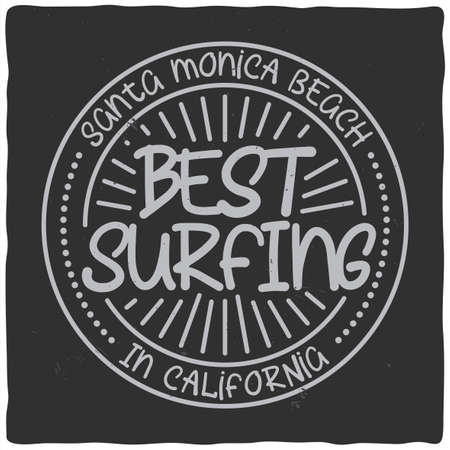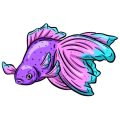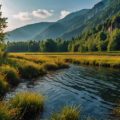Introduction to Fishing in National Parks
For fishing enthusiasts who also crave stunning scenery, Americas national parks offer the perfect blend of outdoor adventure and breathtaking natural beauty. These protected lands are home to some of the most scenic lakes in the country, offering anglers the chance to cast a line while surrounded by towering mountains, serene forests, and crystal-clear waters.
Fishing in national parks isnt just about catching fish—its about the whole experience. Imagine standing on the shore of a pristine alpine lake at sunrise, the stillness broken only by the splash of a trout taking your fly. Whether youre fly fishing in Yellowstone or dropping a line into a glacier-fed lake in Montana, national park lakes offer a peaceful escape from everyday life.
The appeal lies in the unique combination of:
| Feature | Description |
|---|---|
| Natural Beauty | Unspoiled landscapes, diverse wildlife, and dramatic backdrops |
| Variety of Species | Opportunities to catch trout, bass, salmon, and more depending on location |
| Accessibility | Well-maintained trails and designated fishing areas within park boundaries |
| Family-Friendly | Great for solo anglers or family trips with educational opportunities for kids |
Whether youre an experienced angler or just looking to try something new on your next vacation, fishing in national parks offers a rewarding way to connect with nature. In this series, well highlight some of the top scenic national park lakes that every fishing enthusiast should have on their bucket list.
2. Lake Yellowstone – Yellowstone National Park, Wyoming
Lake Yellowstone is a dream destination for fishing enthusiasts who love combining their favorite sport with awe-inspiring natural beauty. Located in the heart of Yellowstone National Park in Wyoming, this massive high-altitude lake sits at over 7,700 feet above sea level and offers some of the most iconic trout fishing in the country.
Legendary Trout Fishing
Yellowstone Lake is best known for its population of native Yellowstone cutthroat trout. These fish are not only fun to catch but also play a key role in the parks aquatic ecosystem. In addition to cutthroat trout, anglers may also encounter lake trout—although its worth noting that lake trout are considered invasive here and efforts are ongoing to manage their impact on native species.
Common Fish Species in Lake Yellowstone
| Species | Status | Best Season |
|---|---|---|
| Yellowstone Cutthroat Trout | Native | Late Spring to Early Fall |
| Lake Trout | Invasive | Summer Months |
Breathtaking Scenery and Unique Setting
The fishing experience at Lake Yellowstone is elevated—literally and figuratively—by its stunning surroundings. Snow-capped mountain ranges rise in the distance, while geothermal features like hot springs and steam vents dot the shoreline. You might even see a geyser erupting in the background as you cast your line. It’s a truly one-of-a-kind setting that makes every trip to the lake memorable.
Fishing Tips for Lake Yellowstone:
- Fishing season typically runs from Memorial Day weekend through early November.
- A Yellowstone National Park fishing permit is required—make sure to check current regulations before your trip.
- Catch-and-release rules apply for native cutthroat trout; lake trout should be removed if caught.
- Boat fishing is popular here, but shoreline spots can also be productive.
If youre looking for a place where world-class trout fishing meets dramatic natural scenery, Lake Yellowstone belongs at the top of your bucket list.

3. Lake McDonald – Glacier National Park, Montana
If youre looking for a fishing spot that combines stunning scenery with great angling opportunities, Lake McDonald in Glacier National Park, Montana, should be on your list. This glacial lake is the largest in the park and offers crystal-clear waters surrounded by towering peaks and untouched wilderness.
What Makes Lake McDonald Special?
The lakes breathtaking setting is reason enough to visit, but for fishing enthusiasts, its also home to several prized fish species. Anglers often come here for:
| Fish Species | Best Time to Fish | Recommended Techniques |
|---|---|---|
| Westslope Cutthroat Trout | Spring through early summer | Fly fishing near stream inlets |
| Lake Trout (Mackinaw) | Late spring and fall | Deep trolling or jigging |
Fishing Tips for Lake McDonald
- Bring polarized sunglasses: The water is incredibly clear, and these will help you spot fish more easily.
- No motorized boats allowed: To preserve the tranquil setting, only non-motorized or electric-powered watercraft are permitted.
- Check local regulations: Glacier National Park has specific rules about catch limits and gear use—be sure to review them before heading out.
Getting There
Lake McDonald is easily accessible via the park’s west entrance near West Glacier, Montana. The Going-to-the-Sun Road runs along the lakes shore and offers multiple pull-offs where you can stop and cast a line.
Good to Know
No fishing license is required inside Glacier National Park, but rules differ from state regulations. Always double-check with park rangers for updated information.
4. Crater Lake – Crater Lake National Park, Oregon
If youre looking for a truly unforgettable fishing experience, Crater Lake in Oregon should be high on your list. Located within Crater Lake National Park, this lake is not only the deepest in the United States—plunging to a depth of 1,943 feet—but it’s also one of the clearest and most pristine bodies of water in the country.
Fishing in a Volcanic Wonder
Crater Lake was formed over 7,700 years ago when Mount Mazama erupted and collapsed, leaving behind a massive caldera that eventually filled with rain and snowmelt. Today, anglers have a unique chance to fish in this stunning volcanic crater, surrounded by steep cliffs and deep blue waters.
Fish Species You Can Catch
The lake is home to two types of fish: kokanee salmon and rainbow trout. Interestingly, these species were introduced by humans between 1888 and 1941, since the lake originally had no native fish population.
Main Fish Species at Crater Lake
| Species | Average Size | Best Time to Fish |
|---|---|---|
| Kokanee Salmon | 10–14 inches | July to September |
| Rainbow Trout | 12–16 inches | June to October |
No License Required!
One of the coolest things about fishing at Crater Lake is that you don’t need a fishing license. That’s right—fishing here is free and open to anyone with a rod and reel. However, there are some rules to follow: only artificial lures and flies are allowed, and all fishing must be done from the shore—no boats or flotation devices are permitted.
Quick Fishing Rules at Crater Lake:
- No fishing license required
Crater Lake offers more than just great fishing—it’s an opportunity to cast your line in one of the most breathtaking natural settings in America. Whether youre chasing kokanee or hoping for a trophy rainbow trout, this spot delivers scenic beauty and peaceful solitude like no other.
5. Jenny Lake – Grand Teton National Park, Wyoming
Nestled at the foot of the dramatic Teton Range, Jenny Lake offers one of the most scenic and peaceful fishing experiences in any U.S. national park. This crystal-clear alpine lake is not only a visual gem but also a favorite spot for anglers looking to enjoy fly-fishing in a serene mountain environment.
Why Fish at Jenny Lake?
Jenny Lakes high-altitude waters are home to native cutthroat trout and lake trout, making it an ideal location for both beginner and seasoned fly-fishers. The calm waters also make it perfect for canoeing or kayaking while casting a line.
Fishing Highlights
| Feature | Details |
|---|---|
| Main Fish Species | Cutthroat Trout, Lake Trout |
| Best Fishing Style | Fly-Fishing, Shoreline Casting |
| Water Type | Alpine Lake (Freshwater) |
| Canoe/Kayak Friendly | Yes |
| Permit Required? | Yes – Wyoming fishing license required |
Tips for Anglers
- Early mornings and evenings offer the best bite times, especially during summer months.
- The lake’s eastern shore is more accessible and popular among local anglers.
- If youre fly-fishing, try using dry flies that mimic local insects like caddisflies or mayflies.
- Canoeing gives you access to less crowded spots along the western shore with stunning views of the Tetons.
Good to Know
Apart from fishing, Jenny Lake is also a gateway to some incredible hiking trails like the Hidden Falls and Inspiration Point trails. So if you’re planning a trip, consider combining your fishing adventure with a bit of trekking through this breathtaking landscape.
6. Tips for Responsible and Rewarding Park Fishing
Fishing in national parks is an incredible way to enjoy nature, but it comes with responsibilities. These protected areas are home to delicate ecosystems and native wildlife, so its important to follow specific rules and best practices to help preserve them for future generations. Heres what every angler should know before casting a line in a national park lake.
Know the Rules: Permits and Regulations
Before you head out, check the fishing regulations for the specific national park youll be visiting. Many parks require a valid state fishing license, and some have their own permits or special rules.
Common Permit Requirements by Park
| National Park | State License Required | Special Park Permit |
|---|---|---|
| Yellowstone National Park | No | Yes (Yellowstone-specific permit) |
| Great Smoky Mountains National Park | Yes (TN or NC) | No |
| Glacier National Park | Yes (Montana) | No |
| Yosemite National Park | Yes (California) | No |
| Olympic National Park | Depends on area | Some areas require permits |
You can usually find up-to-date information on the official website of each national park or at visitor centers.
Practice Catch and Release When Needed
Certain lakes within national parks may require catch-and-release fishing to protect native fish species or support conservation efforts. Even when its not required, many anglers choose to release fish as a way to give back to nature.
Catch and Release Best Practices:
- Use barbless hooks to minimize injury.
- Wet your hands before handling fish to protect their slime coat.
- Avoid keeping the fish out of water for more than a few seconds.
- Release fish gently back into the water facing upstream.
Follow Leave No Trace Principles
The Leave No Trace principles arent just for hikers—they apply to anglers too. Here’s how you can minimize your impact while fishing:
- Pack out all trash: This includes fishing lines, bait containers, and any food packaging.
- Avoid damaging vegetation: Stick to designated trails and avoid trampling shoreline plants.
- Respect wildlife: Keep your distance from animals and avoid nesting areas along lake edges.
- Be mindful of other visitors: Share popular fishing spots respectfully with fellow anglers and park-goers.
A responsible approach ensures these stunning park lakes stay pristine and full of life. By knowing the rules, practicing ethical fishing habits, and respecting nature, youll not only have a rewarding experience—you’ll help protect these amazing places for others to enjoy too.


